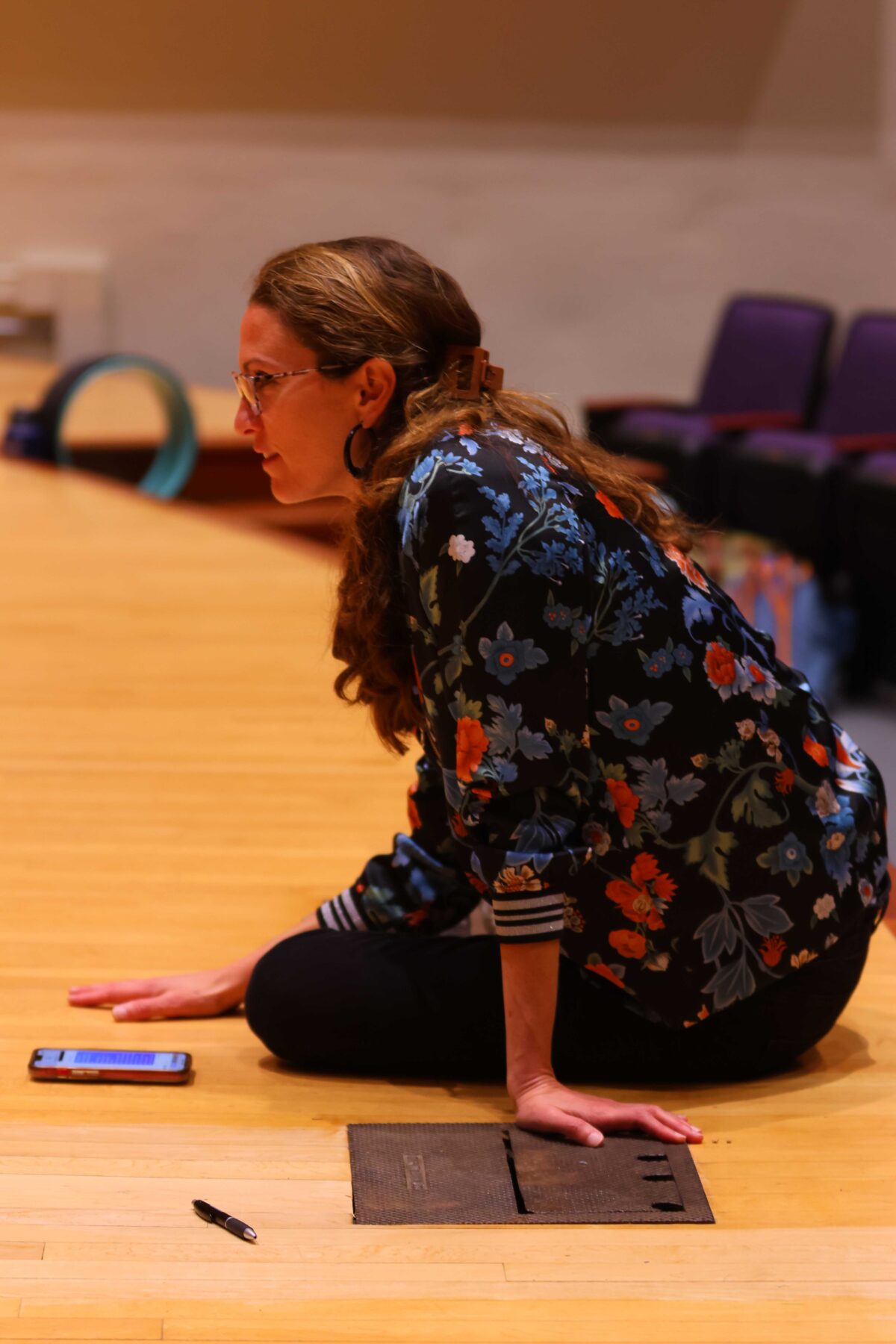

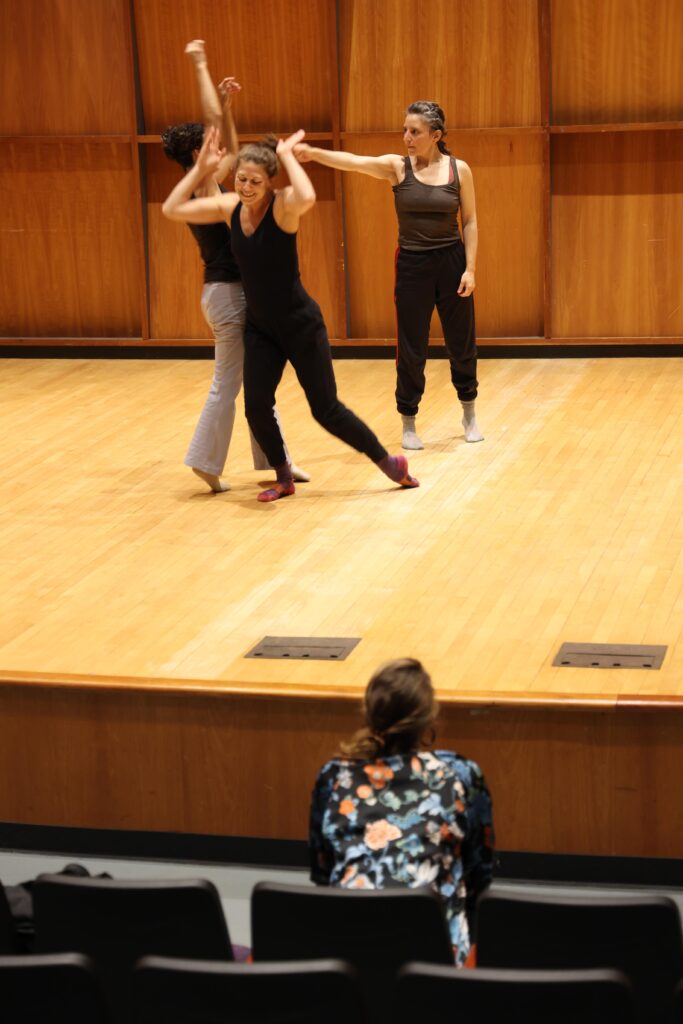
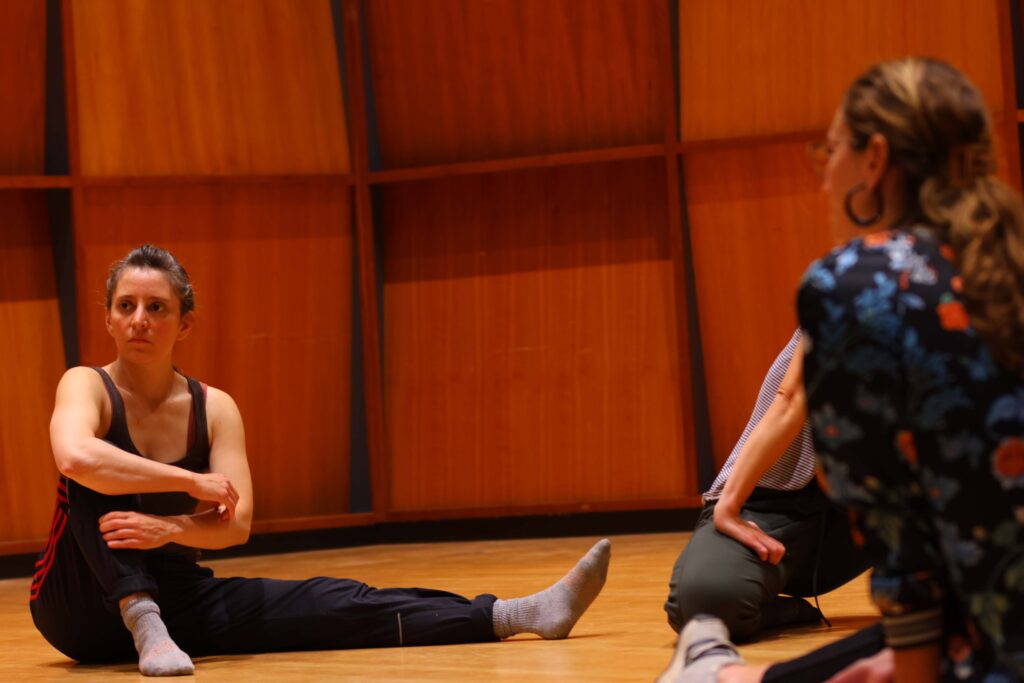
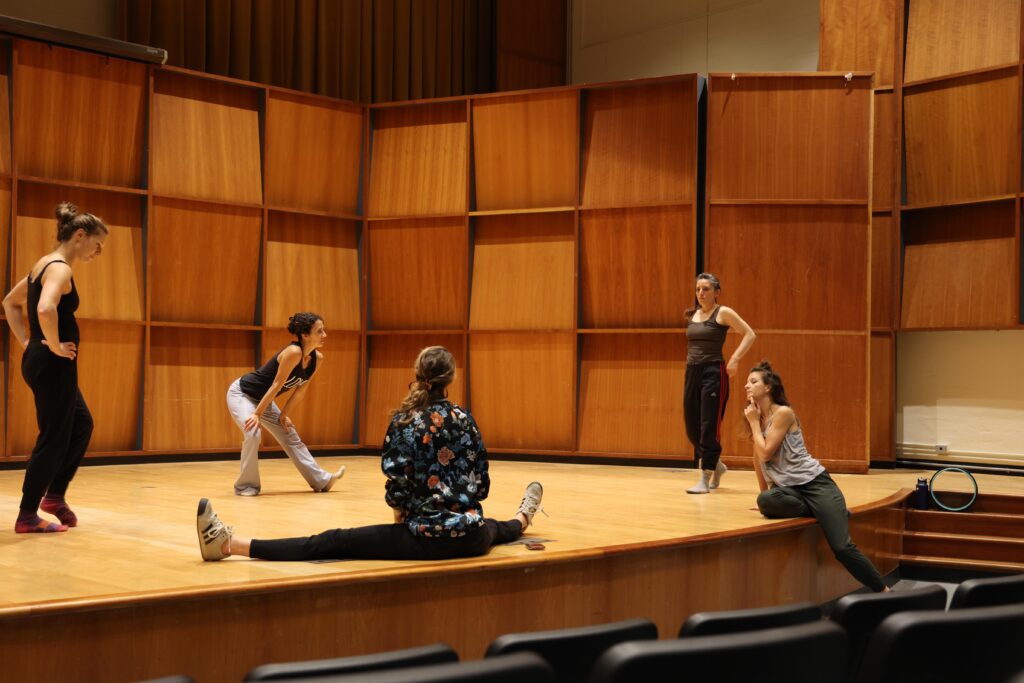
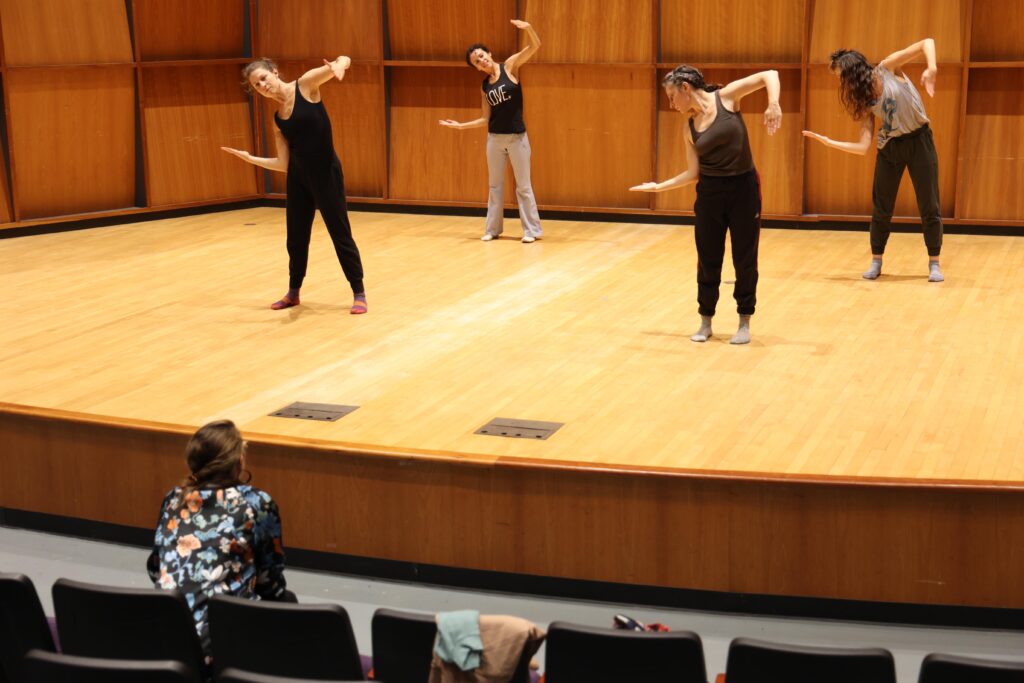
Jack Polatchek/jpolatchek@mail.smcvt.edu/Visual Editor
The concept of conveying emotion was a daunting task for Hanna Satterlee, adjunct professor of Dance at St. Michael’s College and director of the Burlington performance and production company, ANIMAL Dance.
What ended as an abstract display of dance, evolved through two iterations: cinematography and still photography. Satterlee worked in conjunction with her long-time collaborator and cinematographer Andreas John before she landed on what she calls her “first language”, movement.
Satterlee collaborated with four performers from her company ANIMAL Dance (Jessie Owens, Mireya Guerra, Nicole Dagesse, and Marisa Hall), to put on a four-stop tour of her show, Tender Hearts.
The tour held its finale at St. Michael’s College on Sept. 29, in the McCarthy Arts Center.
This project, which initially began in 2020, was inspired by a series of seventeen interviews detailing how individuals define their relationships with themselves, their environments, and the Earth.
“At first we planned on creating a film, we filed for all of the grants but we were denied every single one,” said Satterlee.
The project, which in the end took more than three years to produce, was an investigation into how people experience love and their relationships.
“I was interested in how other people have experienced love, and that had to do with interpersonal relationships, but also with their own souls and with the earth,” said Satterlee.
While much of Satterlee’s past work has taken place in environmental settings, she wanted her audience to have the same visceral and emotional response.
“I wanted the audience to think ‘This is my story, I can relate to this from my own life experience’. I hoped that the audience would relate to the performer’s emotions, and the chance to feel it as an authentic emotion,” said Satterlee.
“I’m not trying to necessarily tell a story because I want to provide an experience and an atmosphere where people are comfortable and intrigued enough to access their own physicality and presence.”

